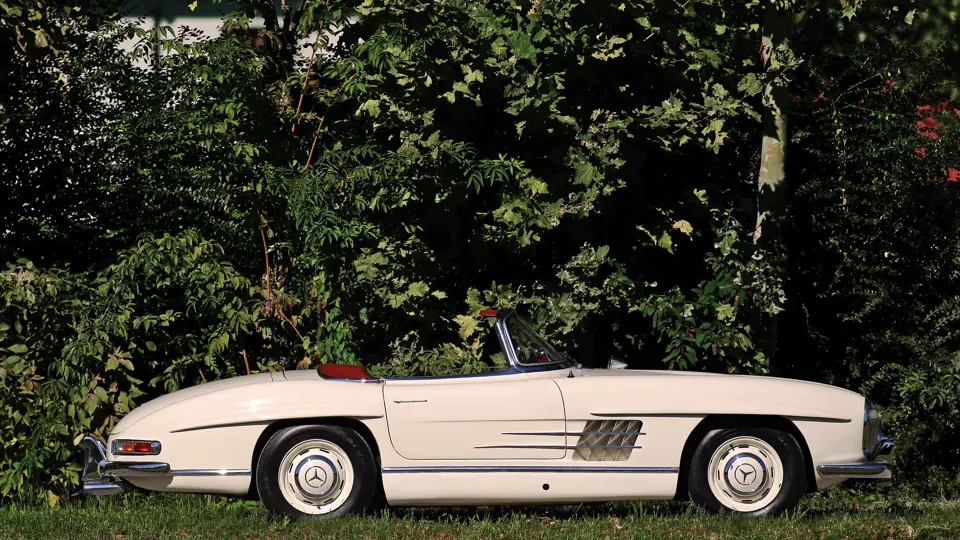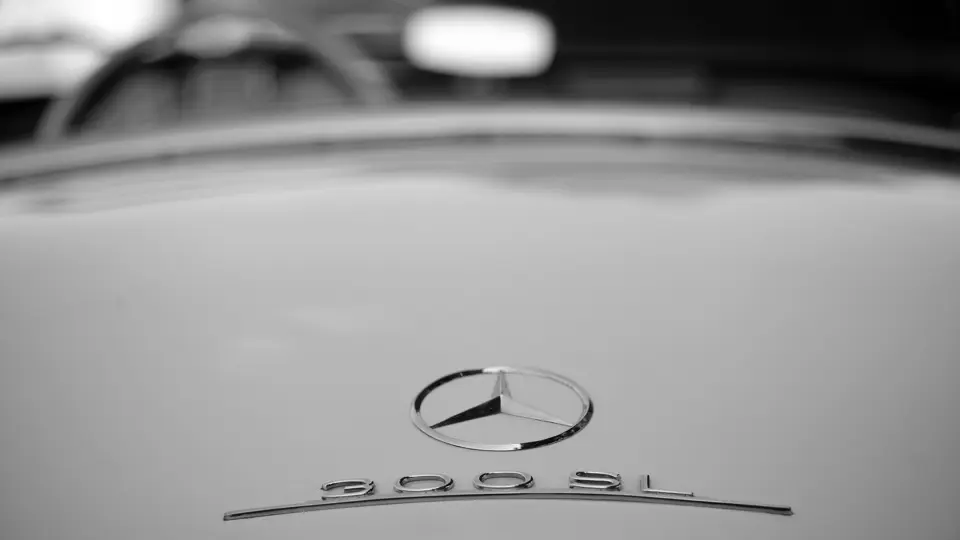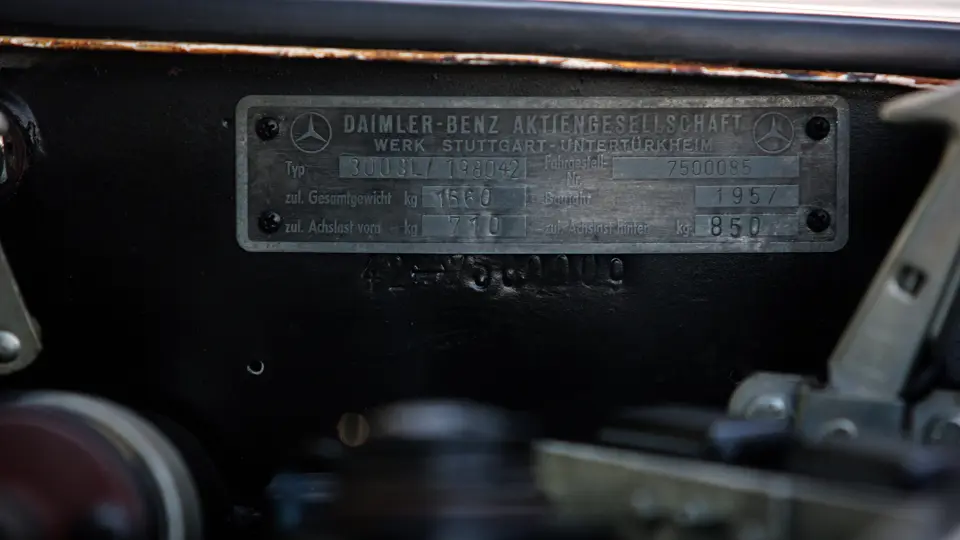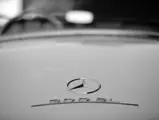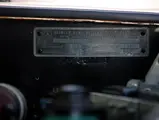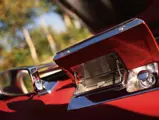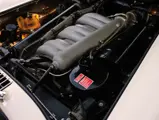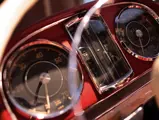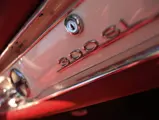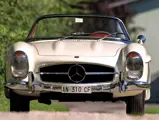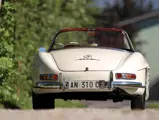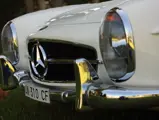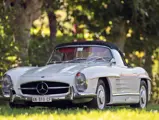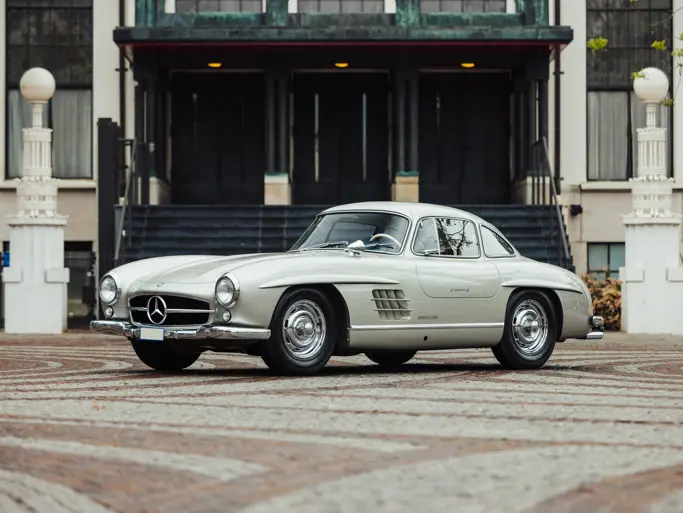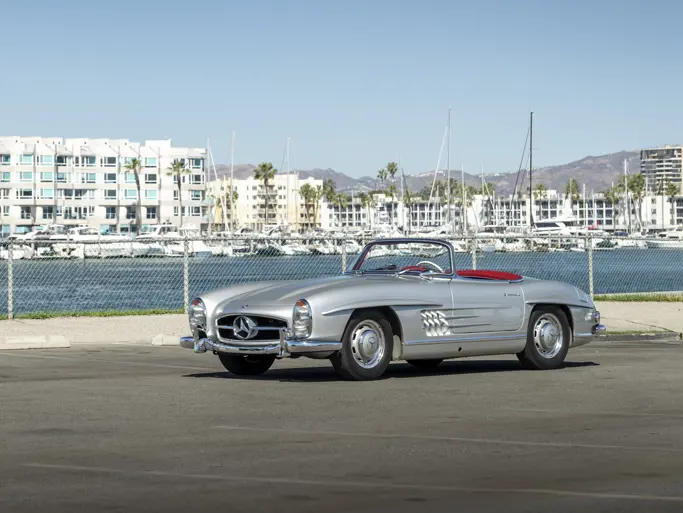240 hp, 2,996 cc SOHC six-cylinder engine, four-speed manual transmission, independent front suspension with upper and lower A-arms and coil springs, rear suspension by low-pivot swing axles and coil springs, and four-wheel hydraulic drum brakes. Wheelbase: 94.5 in.
• One of 618 300SL roadsters built in 1957
• First use of Bosch direct-port mechanical fuel injection
• Zero to 100 km/h in 7.2 seconds, with a top speed of 240 km/h
Few will disagree that the Mercedes Benz 300SL in both coupé and open form was the world’s most advanced, and perhaps the most beautiful, sports car produced by any firm in the 1950s. Many consider it the greatest sports car of all time. Its seeds were planted just a few years after the end of WWII, as Daimler-Benz began picking up what remained of its factories and started producing something besides trucks. Although the potential market was small, the company saw a need for an upscale automobile suitable for government and corporate dignitaries and the wealthy motorist. That car was the 300 series, offered in sedan and four-door convertible form, and it was introduced at the Frankfurt Auto Show in 1951. It proved a success and was soon joined by a luxurious coupé and cabriolet. The 300s were powered by a torquey three-litre overhead-cam inline six of very robust construction that hinted of further development potential. At the same time, the factory was thinking of a return to motorsports and the big 300’s engine offered a good place to begin.
Chief Engineer Rudolf Uhlenhaut and his design team took aim at three-litre endurance sports car racing, and they soon produced the highly-advanced W194 coupé, based on a lightweight tubular space-frame with an all-aluminium body shell and unique top-hinged doors, which resembled a bird’s spread wings when open, thus giving birth to the now-legendary “gullwing” label. Powered by an up-rated version of the company’s straight six laid over at a 45-degree angle to reduce the car’s frontal aspect, the 300SL—the suffix standing for Sports Leich, or Lightweight Sports—quickly proved its worth.
These exotic coupés swept the first two places in the sports class in the 1952 Carrera Panamericana road race, after taking overall wins at Le Mans, Bern, and the Nürburgring. The factory team narrowly missed a victory at the Mille Miglia, settling for second and third overall. With these successes, there was an immediate clamour for the car to be made available to the public.
The first production coupé, now labelled the W198, was unveiled at the 1954 New York Auto Show, where it created a sensation. By then, the engine had been fitted with Bosch mechanical direct port fuel injection, a first for the auto industry. This feature helped the engine produce an impressive 215 horsepower and made the very aerodynamic Gullwing coupé the world’s fastest production automobile. Approximately 1,400 coupés were built and sold between 1955 and late-1957, most of which were destined for American customers.
The new 300SL roadster was introduced at the 1957 Geneva Salon; a total of 1,858 were built through the 1963 model year. The roadster offered a number of minor styling changes from its coupé sibling, including larger fenders, reshaped headlights, a new grille, and chrome side trim. The body shell was still stamped from sheet steel, and the door skins, bonnet, and boot lids remained aluminium. The roadster retained the classic “eyebrows” introduced on the Gullwing, which reduced turbulence within the front and rear wheel-arches, as well as the coupé’s elegant and slender outside door handles. The reinforced chassis meant the soft-top weighed more than the coupé, but power was increased to 240 horsepower with a more sporting camshaft and higher compression. The price rose as well, to about $11,000, and an optional hardtop gave the car year-round capability. To improve the coupé’s sometimes sketchy handling on rough roads, the low-pivot rear suspension was redesigned to include a camber-compensating spring.
The 300SL roadster presented here is finished in a stunning Ivory with a dark red leather interior. Offered from an important European collection, it has been regularly maintained by the collection’s three in-house technicians. The car remains in exceptional condition and shows just over 500 kilometres since restoration. There are few signs of wear, as the Ivory paint is in excellent condition, as are the matching coloured wheels. The chrome and exterior trim is also in superb condition. Contrasting nicely with the exterior, the dark red interior trim is equally as impressive. The leather remains supple and shows little sign of use. The gauges appear fresh, as do the dash and accompanying trim. One would certainly be hard pressed to find issue with this particular roadster.
Stylish, iconic, and downright thrilling in every respect, the 300SL remains one of the most collectable European sports cars on the market. It remains one of the greatest production automobiles ever produced, and it will be forever recognized for sheer performance, heritage, engineering, and overall excellence in an automobile. This car is no exception and is one that any enthusiast would be proud to own.
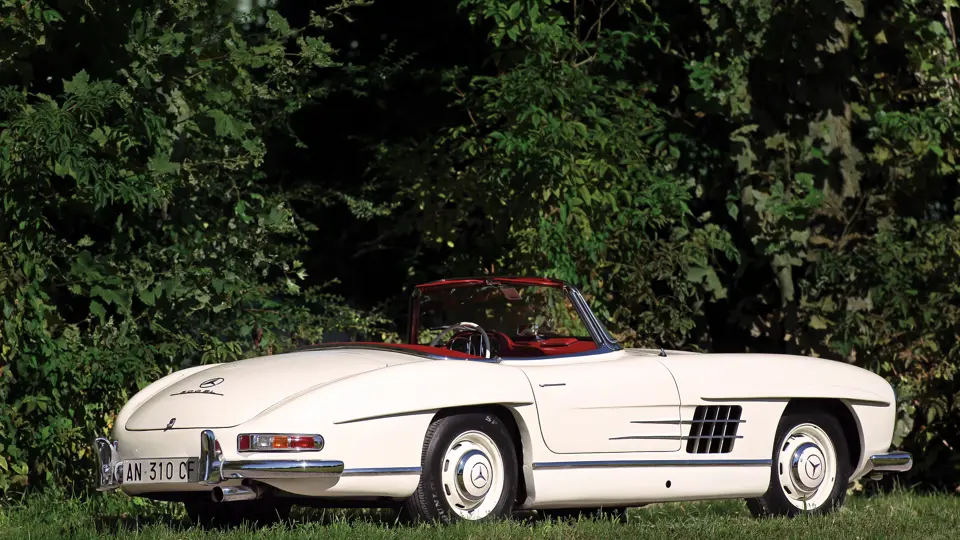



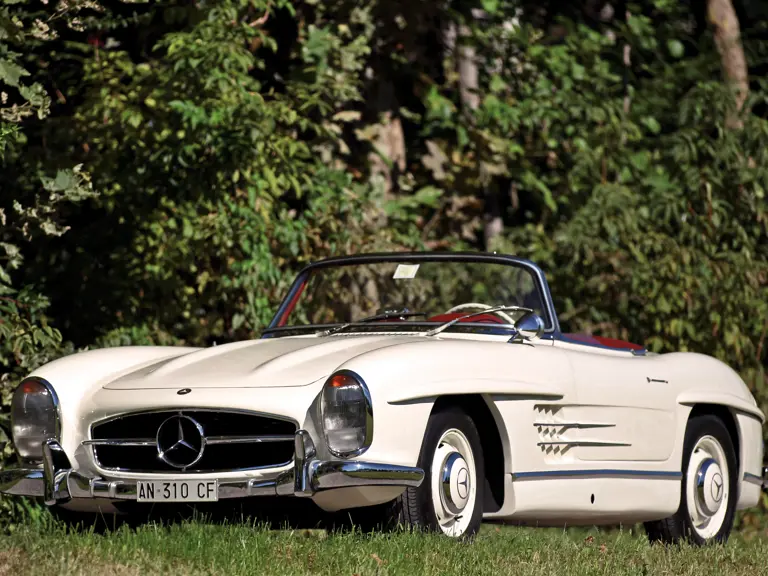
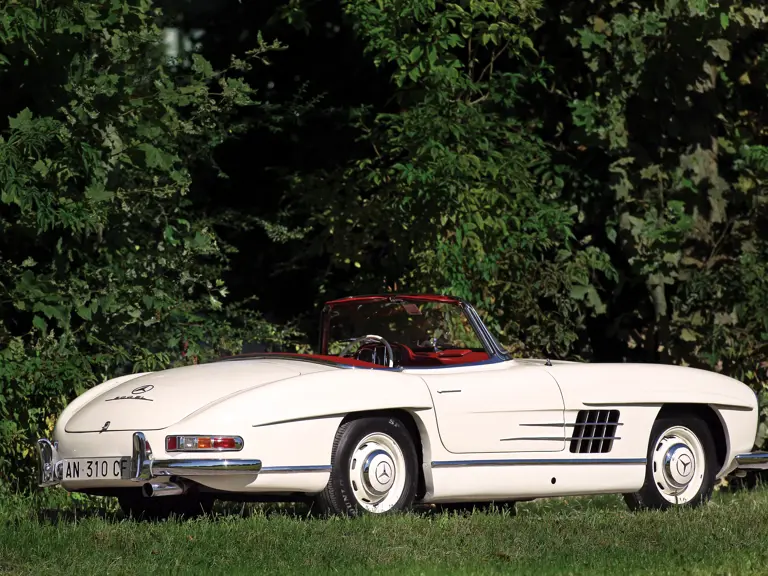

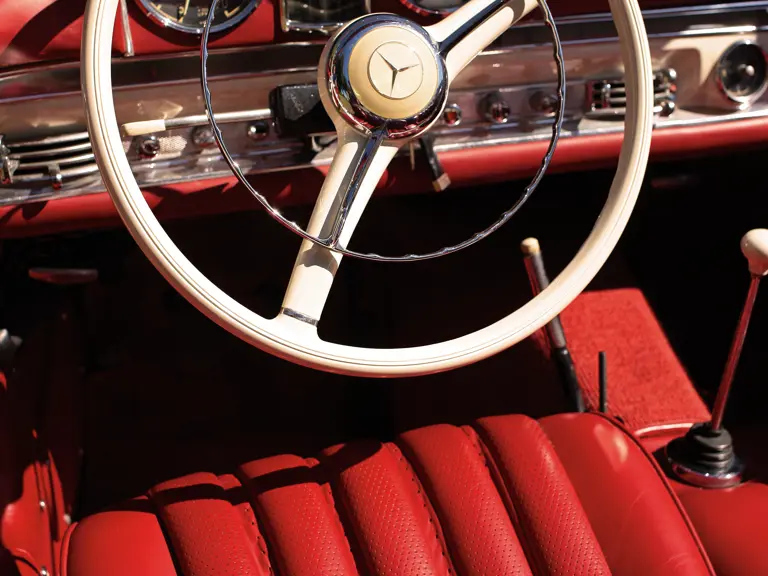
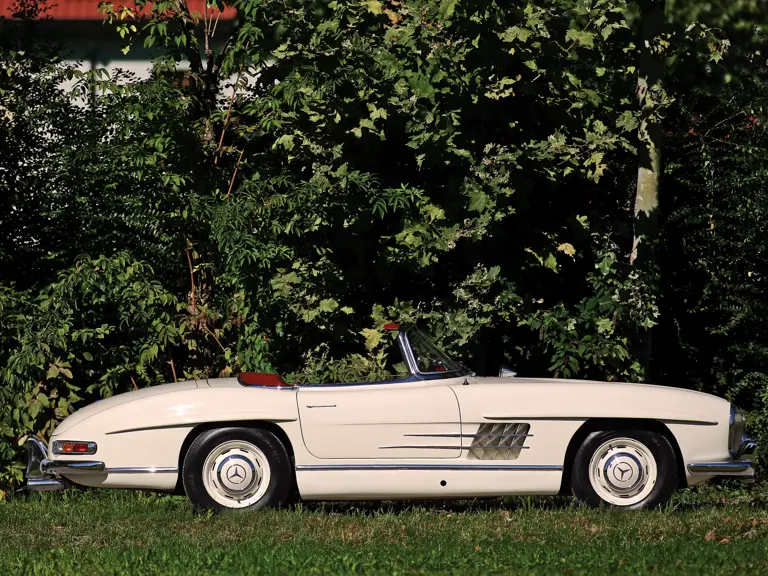

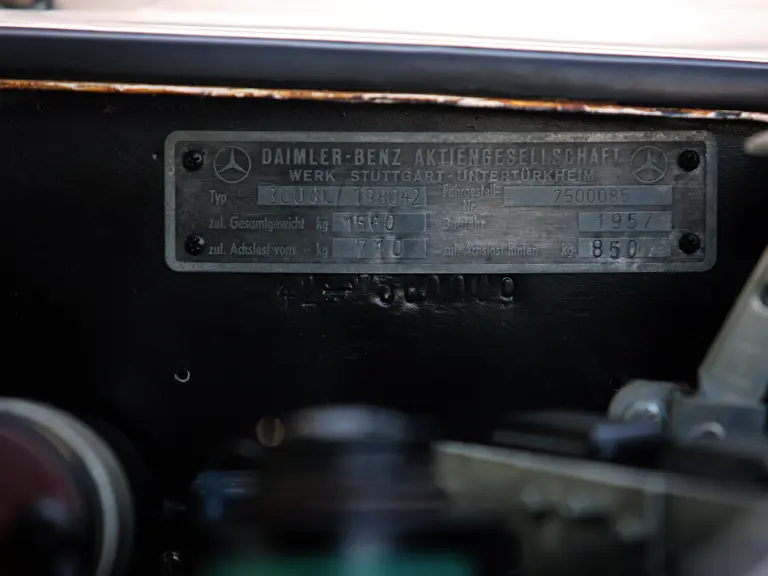
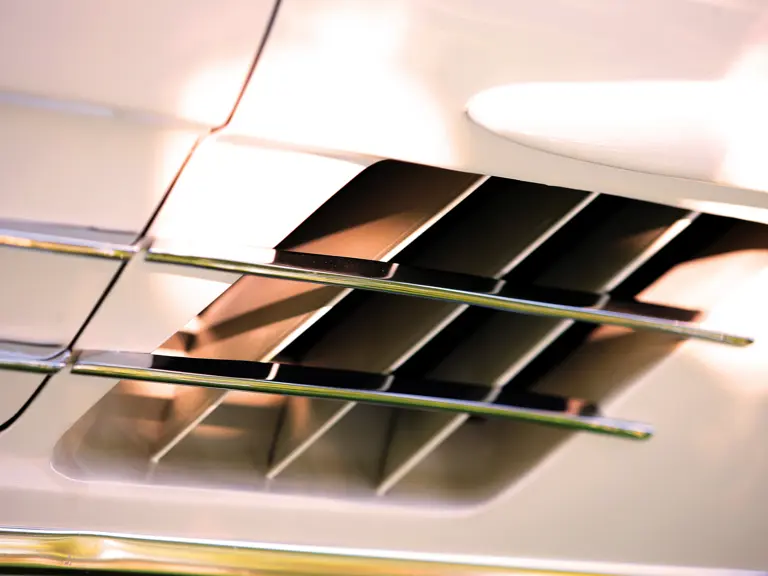
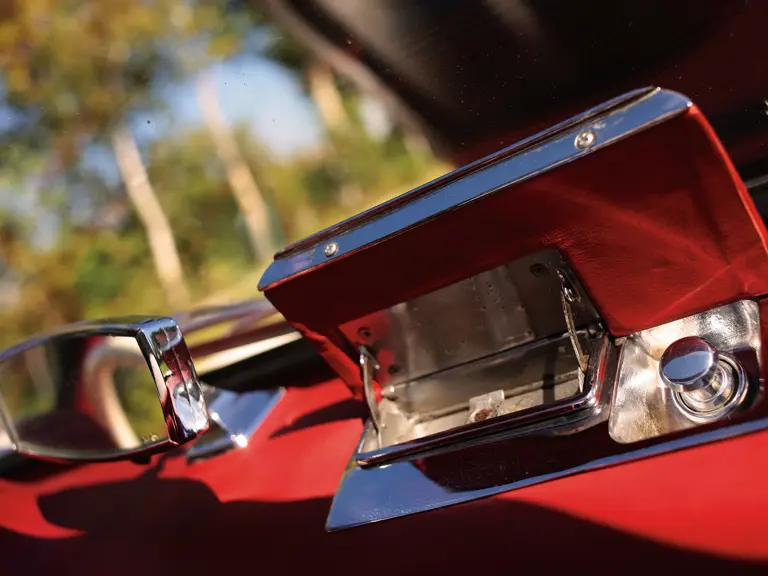
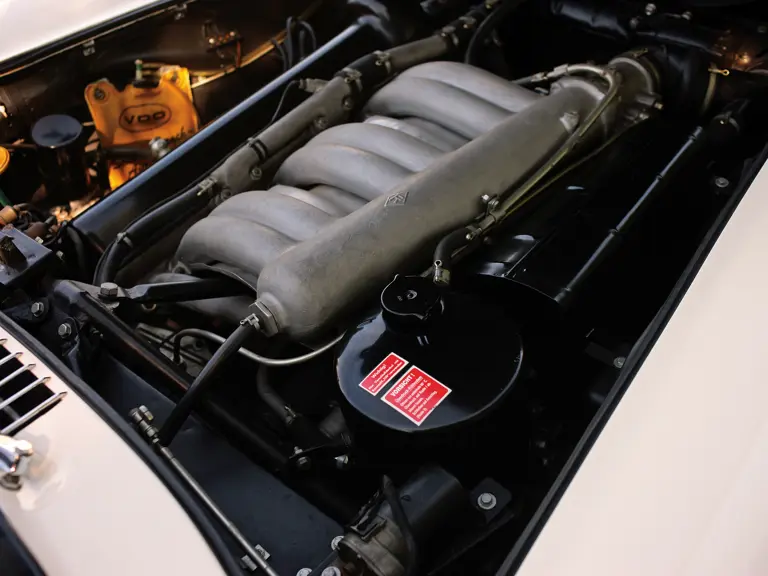
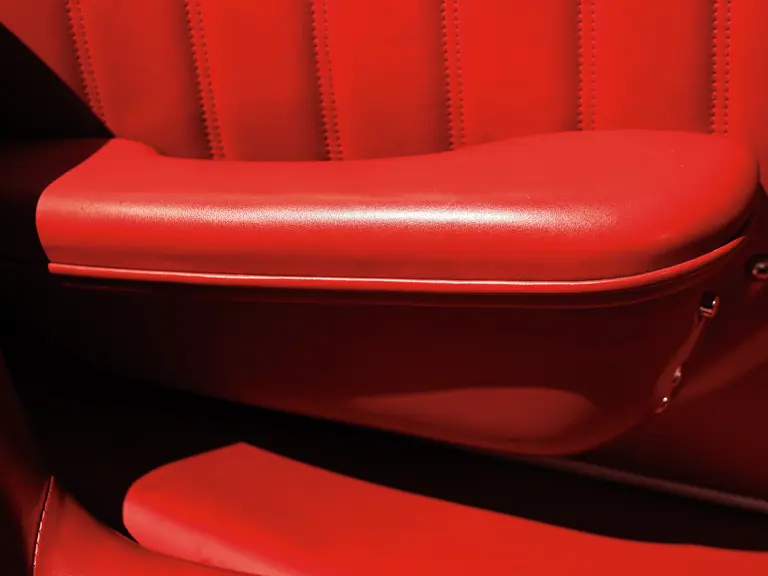

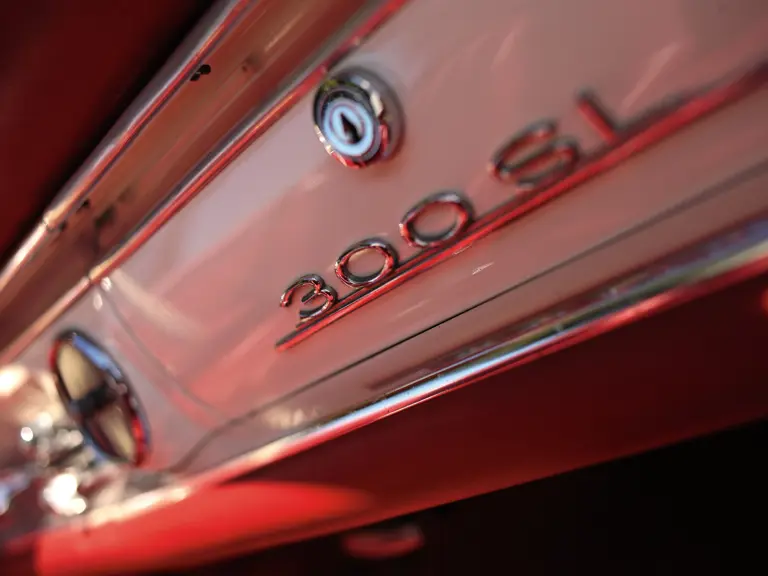
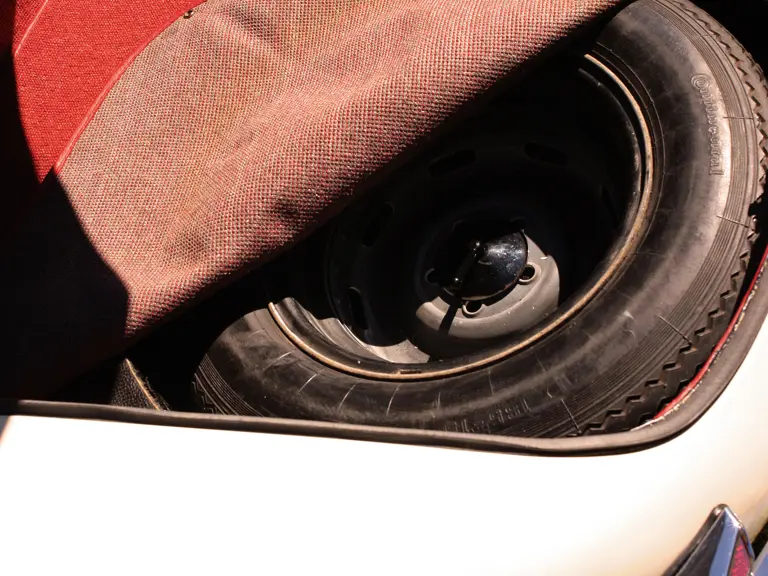

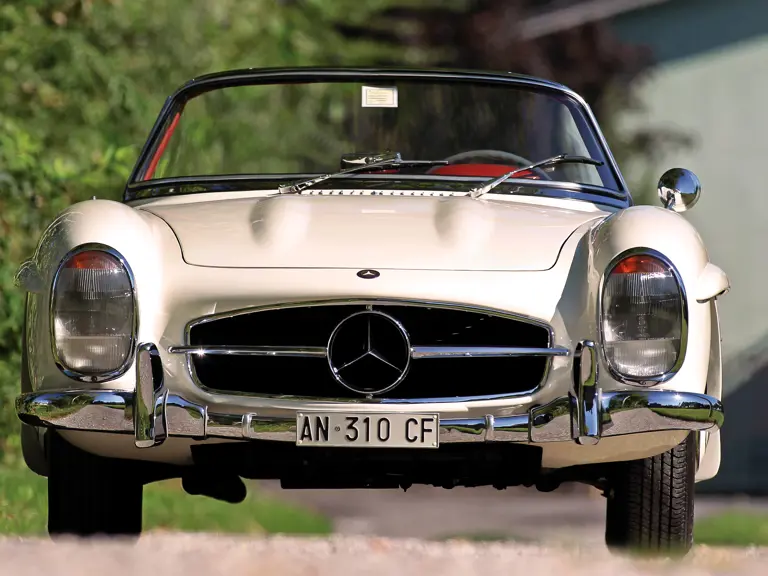

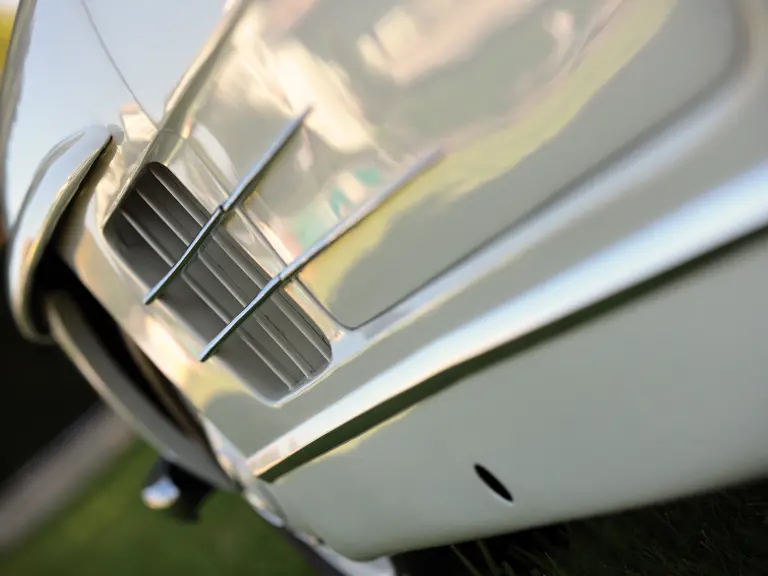

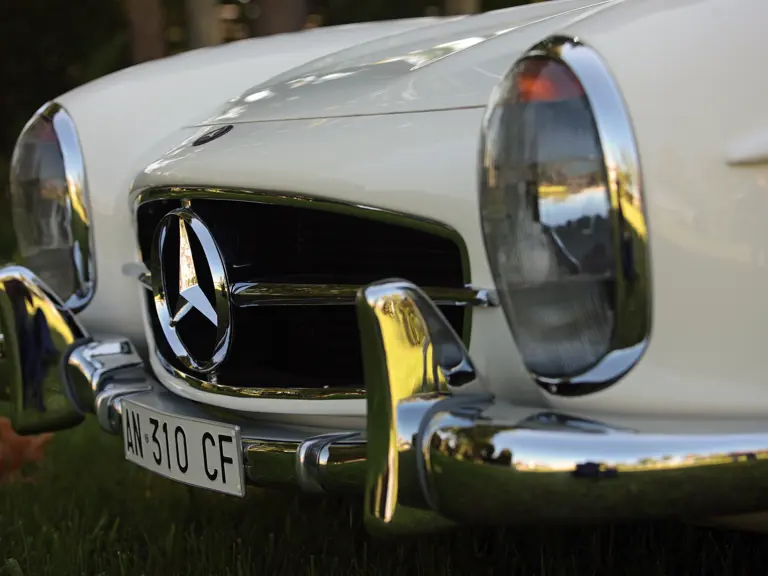
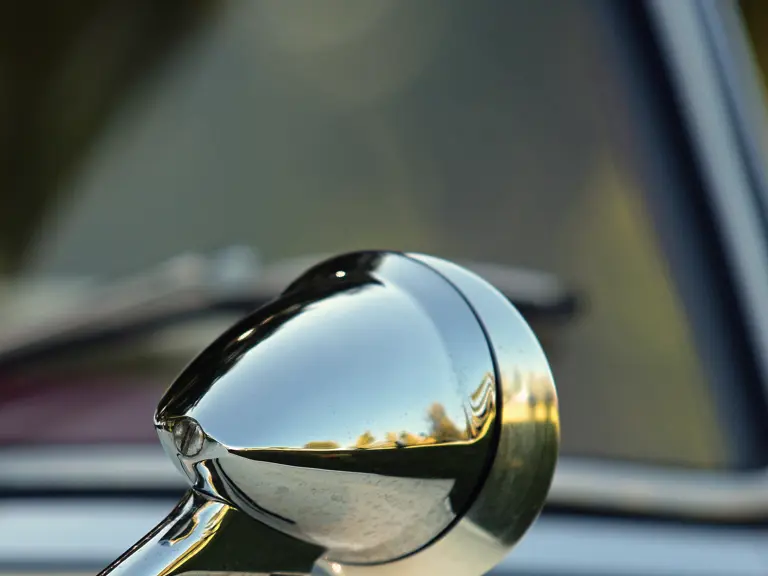
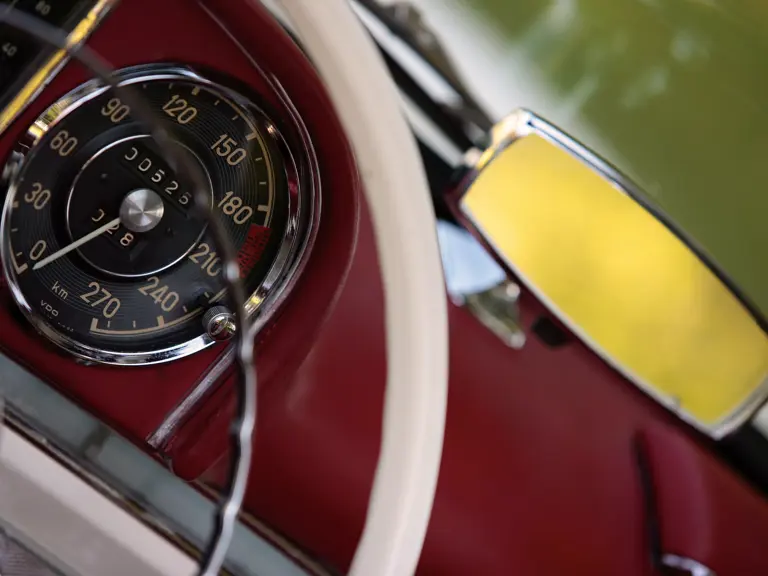

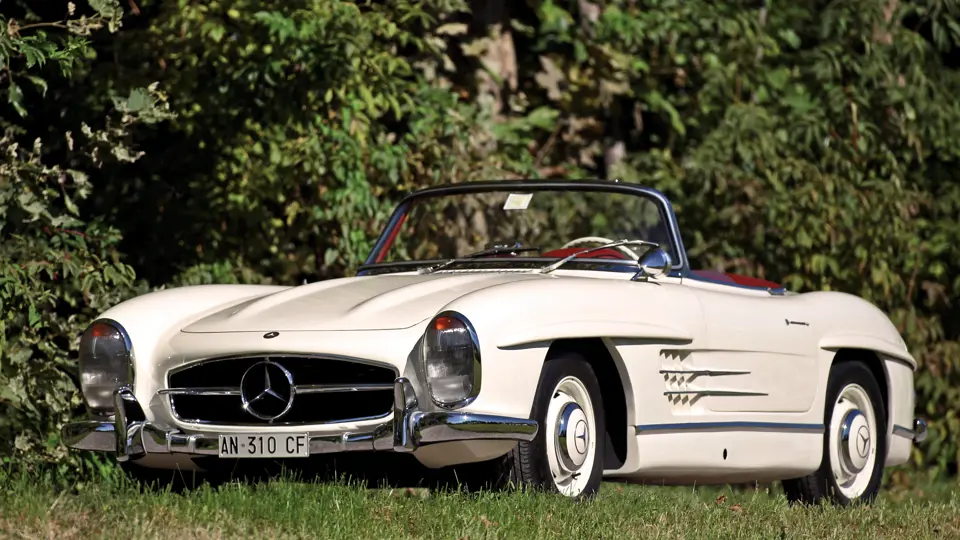
 | London, United Kingdom
| London, United Kingdom
